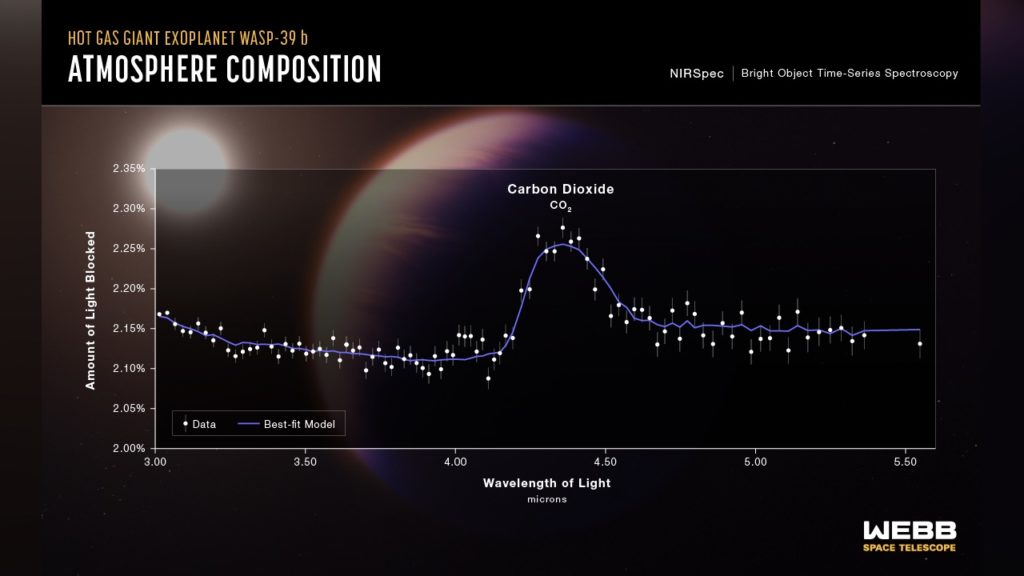
Spectacular astronomical images recently released by the James Webb Space Telescope (JWST) cause Adventist Christians to ponder the question of Numbers 23:23, “What hath God wrought!” (KJV). Our unique worldview gives us a pretty clear idea of why we are, how we came to be in this condition, and where we are going, but the JWST helps us better understand our place in the universe. It’s a grand place indeed!
The JWST was a $10 billion project funded jointly by NASA, the European Space Agency, and the Canadian Space Agency. Its complex engineering is unparalleled. From the unfolding, gold-plated beryllium 6.5-meter-diameter mirror to the multilayered, tennis court-sized heat shield, the technological challenges of constructing and launching the JWST were dramatic.
The telescope orbits around the sun, hovering 932,000 miles (1.5 million kilometers) above the earth. No repairs or upgrades can be made to the system. The JWST sensors detect infrared radiation (longer wavelengths than visible light), allowing observations that complement the images formerly captured by the Hubble Space Telescope (HST).
Even with only a handful of images, the JWST is creating a stir among astrophysicists. Here are a few important areas of study where the JWST is contributing.
The JWST is imaging galaxies at extreme distances from us—perhaps more than 13 billion light-years. Light takes 13 billion years to travel this distance, so astronomers assume that these are infant galaxies formed shortly after the Big Bang. The subsequent expansion of space has stretched the galaxy light into the infrared.
Thousands of such baby galaxies are seen in the cluster image of SMACS 0723, appearing as jewels tossed onto a velvet cloth. Cosmological models, which predicted very few such galaxies in the early universe, are being reworked to explain the plethora of galaxies in the images. A key ingredient of science is to allow actual observations to inform theory.

Young stars are currently forming within dense, cool cocoons of dust and gas. The dust and gas absorb and scatter visible light, but are relatively transparent to infrared radiation, making the JWST the ideal instrument for peering into stellar nurseries to learn about the generation of new stars. The image of the Carina Nebula shows a wall of interface where ultraviolet radiation from hot stars above are evaporating the surface of a dense, cool molecular cloud in the lower portion of the image.
Using infrared technology, the JWST sees deep into the cloud interior, revealing infant stars emerging from their dust/gas shrouds as red dots. Careful study of these emerging stars and their environment will yield key information about the process of star creation.
Very recent Webb pictures also reveal colorful, penetrating images of a similar stellar nursery, the Orion Nebula, which has long captivated Adventist thought and imagination.
During the past three decades thousands of exoplanets (planets orbiting stars other than our sun) have been detected. The search for earth-like planets is a very strong motivation in this area of study. The JWST infrared cameras are ideal for studying warm objects like planets. Both the HST and JWST captured images of a gas-giant exoplanet, but the large distance makes it impossible to discern any surface details.
The JWST’s infrared spectrograph is scientifically significant. Different chemicals in an exoplanet atmosphere will absorb different wavelengths. The absorption spectrum of the gas-giant exoplanet WASP-39b shows a distinct blip in the graph, indicating the presence of the carbon-dioxide molecule. This is the first-ever detection of CO2 in an exoplanet’s atmosphere and promises the potential discovery of other simple molecules such as water or methane on other exoplanets.
One fact that is abundantly clear from the study of exoplanets: Planet Earth is the only habitation available to humankind. There is no Plan B exoplanet within any reasonable traveling distance. God needs us to be faithful caretakers of our earth until Jesus returns.
Allow yourself to be drawn into the sheer aesthetic beauty of the Phantom Galaxy where God’s impressionistic style is on full display. This image represents the intersection between the finite comprehension of the human mind and the awesomeness of God as seen through the splendor of His natural creation.
Who can predict what future imagery and data are to be gleaned from the JWST? Ellen White excites us with her lovely hint at research projects we may anticipate throughout the eternity to come: “There, when the veil that darkens our vision shall be removed and our eyes shall behold that world of beauty of which we now catch glimpses through the microscope; when we look on the glories of the heavens, now scanned afar through the telescope; when, the blight of sin removed, the whole earth shall appear ‘in the beauty of the Lord our God,’ what a field will be open to our study!”*
In the here and now, our response to absorbing these mind-boggling images should be twofold: worship God with high praise as author of all (Ps. 95:6) and live life in accordance with the unbelievable value He has placed on each one of us.
* Ellen G. White, The Adventist Home (Nashville: Southern Pub. Assn., 1952), pp. 547, 548.
